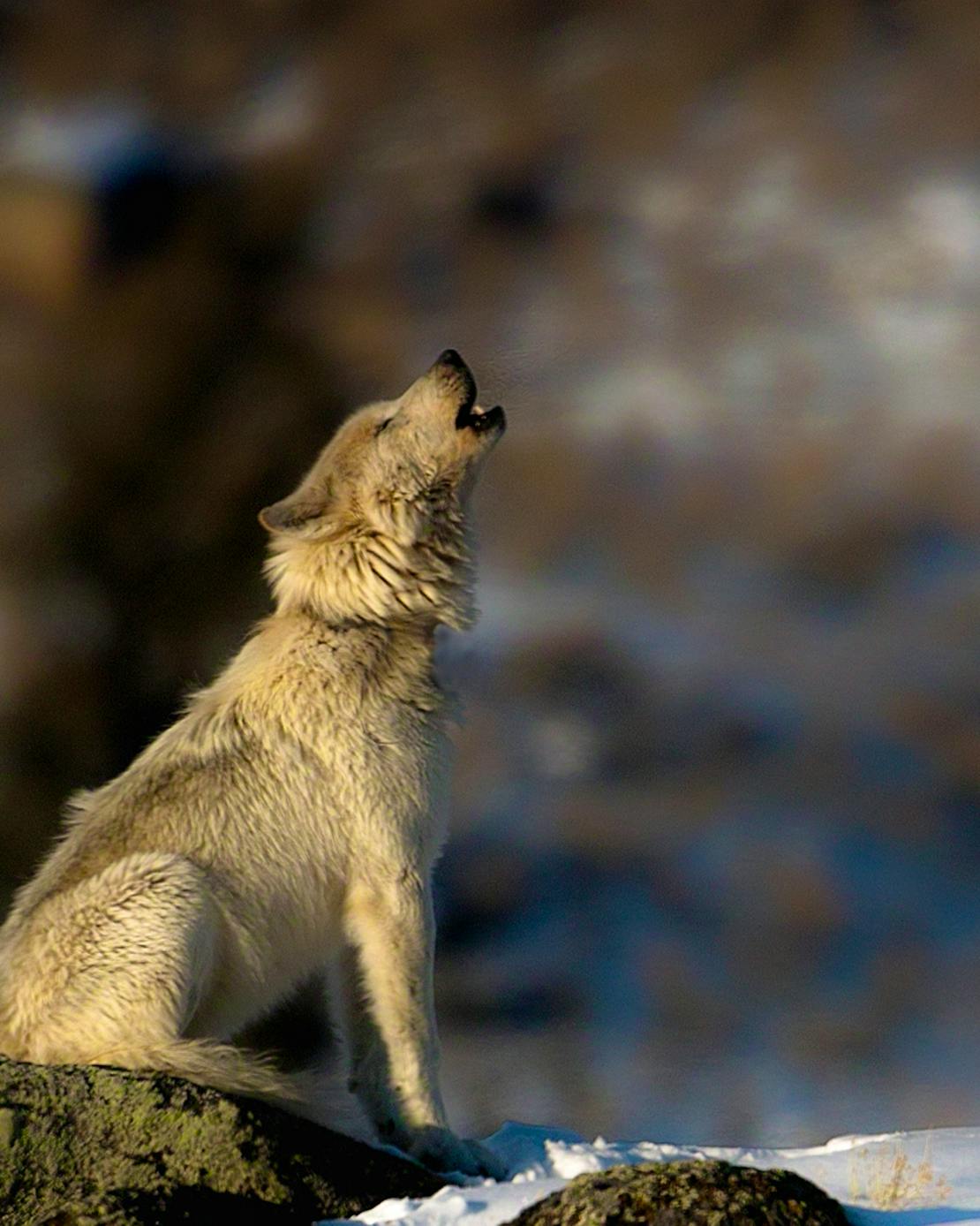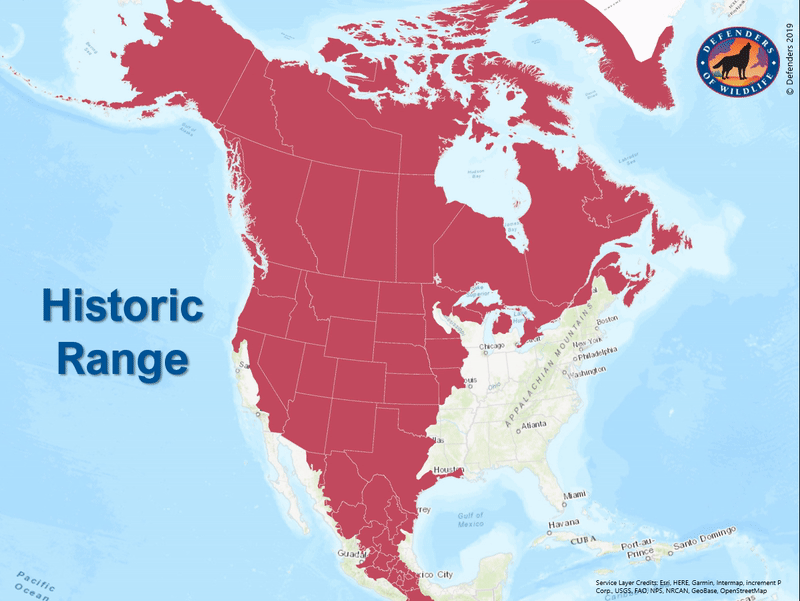Twenty-five years ago, gray wolves were returned to the wilds of Yellowstone National Park in Wyoming and the Frank Church—River of No Return Wilderness in Idaho. To help celebrate this anniversary, here is a collection of quick facts and history!
- Wolves were first formally designated as “endangered” under an earlier and much weaker version of today’s ESA in 1967. At this time, Defenders takes the lead in wolf recovery, calling for wolf reintroduction in Yellowstone National Park.
- Wolves are a conservation success story. Gray wolves were brought to Yellowstone National Park on January 12, 1995; released to the Frank Church—River of No Return Wilderness on January 14, 1995; and released from acclimation pens into the wild of Yellowstone on March 22, 1995. By the end of 1996, 31 wolves had been reintroduced into Yellowstone.
- Gray wolves are big. Gray wolves grow to be 5 to 6-feet long, stand 2 to 3-feet tall and weigh 80 to 120 pounds.
- Wolves communicate in various ways. Wolves use facial expressions, tail positions and other body language to communicate with one another, in addition to vocalizations like barks, howls, yips, growls and whines. Wolf howls can be heard 5-10 miles away.
- Wolves don’t live very long - typically seven or eight years in the wild.
- There are wolves in Washington! A pack with pups was confirmed in July 2008 in north central Washington, representing the first fully documented breeding by wolves in the state since the 1930s.
- Wolves come in all colors. Gray wolves, despite their name, vary widely in color from being almost completely white to being totally black and many shades of gray, tan and brown in between.
- Wolves can travel really far. Wolf territories can range from 50 to 1,000 square miles.
- Wolves can eat a lot. Or a little. Adult wolves eat 5 to 14 pounds of meat per day on average, but sometimes it can be 12 days or more between meals. Hunts are only successful 3-14% of the time, wolves survive on a ‘feast or famine’ diet. Wolves have 42 teeth and eat mainly large hoofed mammals (known as ungulates) such as deer, elk, moose, caribou, bison, bighorn sheep and muskoxen. They also sometimes eat smaller prey such as snowshoe hare, beaver, rabbits, opossums and rodents.
- Wolves are well-known in literature and mythology. Wolves are frequently mentioned in folklore across the world –Little Red Riding Hood, Romulus and Remus, Fenrir, werewolves, Sirius the Wolf Star, and many others.
- Wolves live in family groups called packs. Pack size is usually 4-7 wolves, but some packs have been documented to reach more than 30 individual wolves
- Wolves are a keystone species. For example, in Yellowstone National Park, the return of wolves has altered elk grazing behavior. With less grazing pressure from elk, streambed vegetation such as willow and aspen are regenerating after decades of overbrowsing. As the trees are restored, they create better habitat for native birds and fish, beaver and other species. In addition, wolves have reduced Yellowstone’s coyote population by as much as 50 percent in some areas, which in turn increased populations of pronghorn and red fox.
One of OR-7's wolf pups in southwestern Oregon. - One of the most famous wolves in American history is OR-7. Commonly known as Journey, OR-7 inspired the Pacific Northwest and Northern California to embrace the expansion of wolves. Thousands of people have followed his story as he trekked from the far corners of Oregon, across the state, and even all the way down to California. He’s sired 17 pups that have spread out around the state of Oregon and into California, some forming their own packs.
- Defenders’ efforts to promote nonlethal tools and techniques are important to continued wolf recovery. By connecting with people working on the ground, we are developing relationships necessary for cooperation and giving livestock producers the tools they need to succeed in a landscape restored with one of its native predators.
- There are wolves in California! In the summer of 2015, the California Department of Fish and Wildlife (CDFW) shared the news that the state’s first resident wolf family, dubbed the Shasta Pack for the massive dormant volcano near where they were discovered, had settled into eastern Siskiyou County.
- Once widely distributed across North America, gray wolves now only occupy about 10% of their historic range in the continental U.S.
- There are wolves in Oregon! A single wolf was seen in Oregon in 1999 after being previously eradicated from the state in 1946 and the first pack was officially recognized in the northeastern part of the state in 2009.
- Colorado will vote on reintroducing wolves in 2020. Over 200,000 Coloradans signed the petition to place a referendum on the 2020 election ballot asking voters to support wolf reintroduction to Colorado.
- Corridors are important. Habitat connectivity for wolves, as for many other species, remains a challenge and except for a few adventurous wanderers who make it out of protected areas and through hostile states, it is difficult for wolves to expand their range across the West.
- Wolves are fast. They can run up to 38 mph over short distances and can travel over vast distances at more than 5 mph.
Then-president of Defenders of Wildlife, Rodger Schlickeisen, helping with wolf releases in Yellowstone National Park. - Wolves might not have returned to Yellowstone without Defenders. Then-president of Defenders of Wildlife, Rodger Schlickeisen, was on the ground to help with the wolf releases in Yellowstone in 1995 after Defenders set up a livestock compensation fund to alleviate the fears of local landowners.
- Wolves are threatened by conflict with humans and intolerance, and the loss of both habitat and protections under state and federal endangered species laws.
- The gray wolf is endangered in many parts of its historic range but delisted (by Congress) in much of the Northern Rockies.
- The scientific name for the gray wolf is Canis lupus.
- The wolf population is growing. There are now approximately 1,400 wolves inhabiting the northern Rockies, over 4,000 in the upper Great Lakes region and gray wolves are on the move and forming new packs in Oregon, northern California, and the Cascade mountains of Washington.









